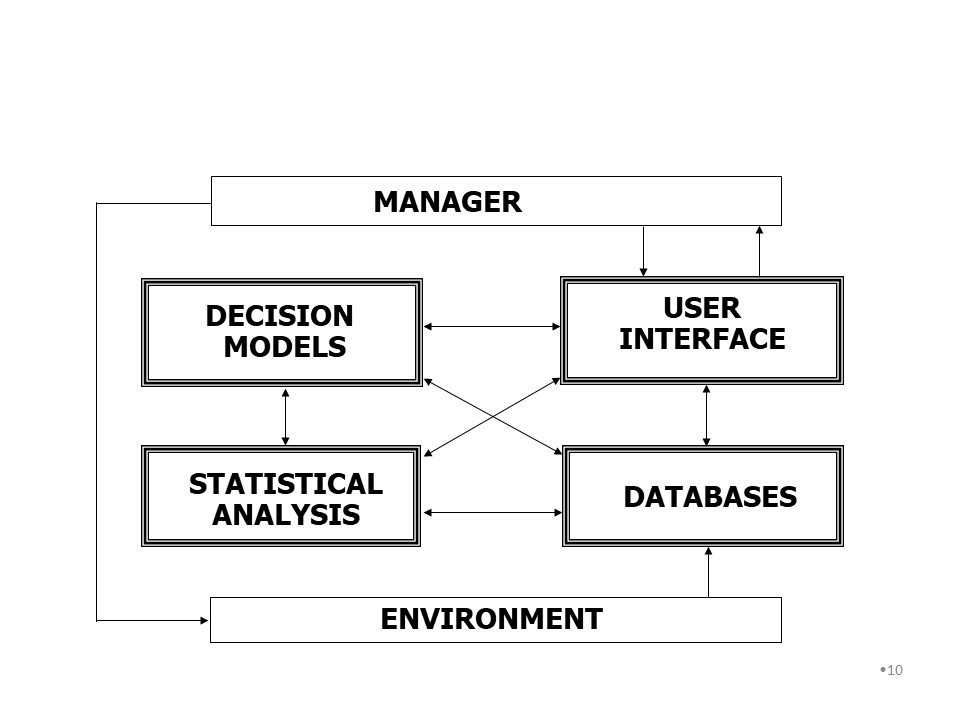8.2 What is a Model?
There are different modeling techniques that can be found in the literature, and many types of decision models. In fact, it is most likely that policy analysis will require the use of many different modeling tools and techniques depending on the problem at hand. A model provides a particular perspective to a decision problem, and using different modeling techniques to the same problem may lead to different policy options. In this way, using several models when thinking on a specific problem constitutes a useful approach to understand several aspects of a problem before making a decision. When using models, it is important to develop a deep understanding of each modeling technique, its basic assumptions, strengths and limitations. Thinking about the importance of mastering different types of models and the risks of always using the same approach to any problem, Abraham Maslow pointed out, “if the only tool you have is a hammer, you tend to treat everything as if it were a nail” (cited by Meadows, 1980, p. 24).
During the years, researchers and practitioners in the fields of economics, mathematics, operational research, systems analysis –among other disciplines—have developed many different types of qualitative and quantitative models. Most of these models and techniques are usually classified according to their purpose or according to the modeling technique (see Figure 8.4). In terms of their purpose, models can be either descriptive, prescriptive or designed to explore scenarios. In an analysis of 30 years of research in the Journal of Policy Modeling, Ruiz Estrada & Yap (2013) found that only 9% of the published papers in the time period of 1979-2012 followed a descriptive approach, only 1% of the papers in the same sample used a what-if approach, and the rest of them followed a prescriptive approach to modeling. In terms of the technique used to model development, it is common to classify qualitative models as mental, prose and flow models. There are many different ways to classify mathematical models, in terms of their approach to probabilistic events (stochastic vs. deterministic), their approach to time (static vs. dynamic or discrete vs. continuous), their approach to the nature of the causality (linear vs. non-linear), and their approach to find or explore policy alternatives (analytical vs. simulation). Quantitative models represent a little bit more than half (55%) of the research in policy modeling, and static models constitute 85% of the papers published in the aforementioned journal (Ruiz Estrada & Yap, 2013). Simulation approaches, however, have been of increasing interest among policy makers and researchers, particularly in working with groups of policy makers in collaborative modeling.

Figure 8.4 A Classification of Models Adapted from (Zhang, Luna-Reyes and Pardo, 2016)
In sum, there is a variety of analytical models from different purposes and perspectives that need to be considered and selected for decision making. Integrating conclusions of different modeling perspective is usually a challenge for policy and decision makers. In thinking about ways of integrating modeling techniques with data and decision making, experts in decision support systems have conceptualized a system that may include the components represented in Figure 8.5. The figure suggest that public organizations and policy makers may be more effective in making decisions and designing policy when having at hand the four main components at the center of the figure, data, statistical tools, models and a easy-to-use user interface that gives them access to data and analytical tools.

Figure 8.5 Models and Data in Decision Support Systems
Further reading
- Little, J. D. C. (2004) Models and Managers: The Concept of a Decision Calculus. Management Science 50(12_supplement):1841-1853.
- Meadows, D. H. (1980). The Unavoidable A Priori. In J. Randers (Ed.), Elements of the System Dynamics Method (pp. 23–56). Productivity Press.
- Zhang, J., L. F. Luna-Reyes and T. A. Pardo (2016) “Information, Policy, and Sustainability: The Role of Information Technology in the Age of Big Data and Open Government” in J. Zhang, L. F. Luna-Reyes, T. A. Pardo and D. S. Sayogo (Eds.), Information, Models, and Sustainability: Policy Informatics in the Age of Big Data and Open Government, Public Administration and Information Technology (PAIT) Series, Springer, pp. 1-19.
Attribution
By Luis F. Luna-Reyes and Erika Martin, and licensed under CC BY-NC-SA 4.0.
